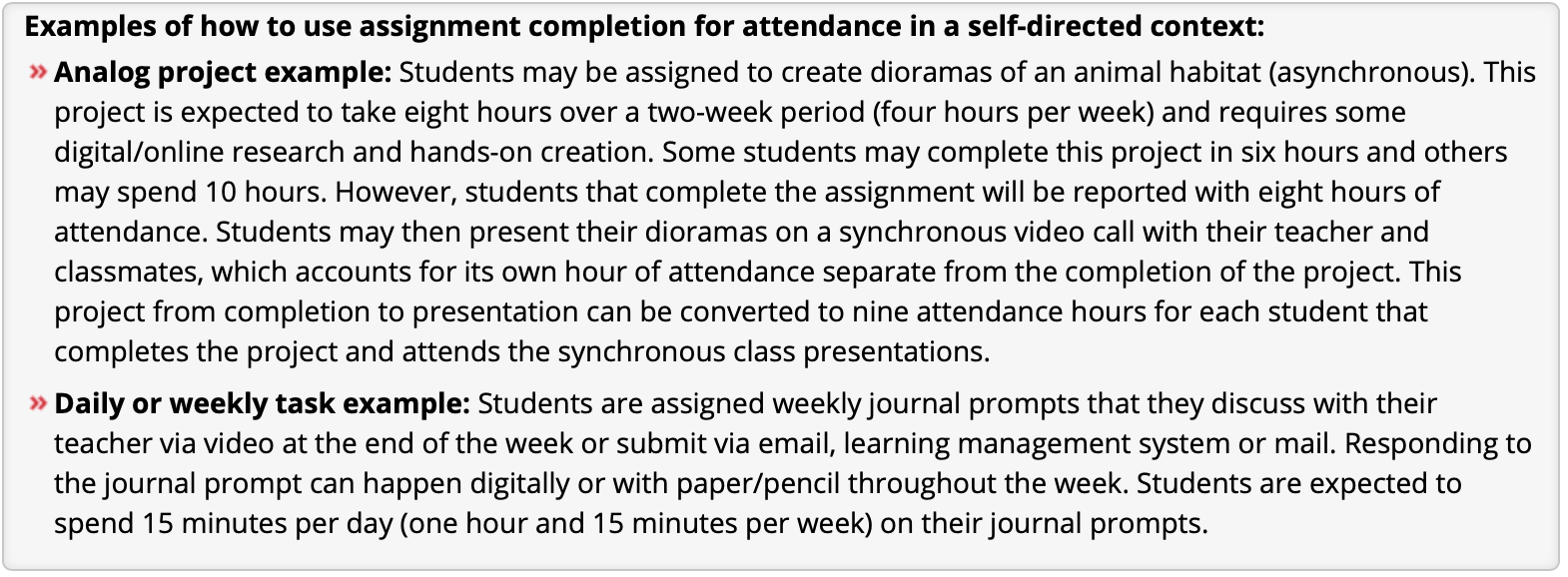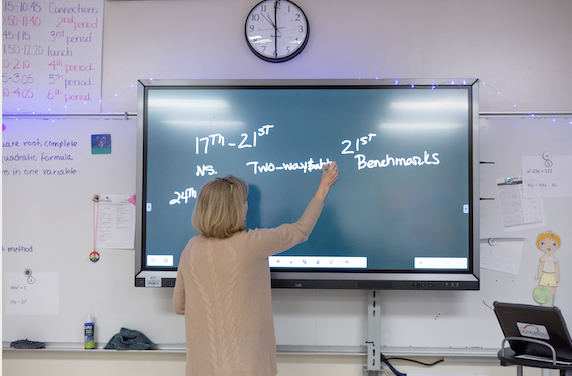This piece ran as a commentary in The 74.
In suburban Detroit, a teenage girl was sent to juvenile detention after failing to complete her online homework. The story, as is often the case, is more complicated than that. But it underscores a key dilemma many school leaders face as they contemplate another semester of remote learning: How do you measure student participation when students aren’t in school?
Traditionally, attendance has been the proxy for participation and engagement. The mere act of showing up for school meant a student was present—even if she didn’t do her homework or raise her hand in class. Court intervention could come with habitual truancy, but not with missed assignments.
So what’s the online equivalent of showing up for school? Is it logging on to a remote portal? Interacting with a teacher one-on-one or on a group video conference? Turning in an assignment?
State reopening guidance, new regulations and even some laws reflect a range of approaches, emphasizing flexibility for different circumstances among districts and even among students. While many districts gave up on monitoring attendance when the pandemic first shuttered schools, states are expecting them to track the data in the coming year.
Some states give very specific recommendations. Minnesota, for instance, defines attendance as “interaction with a teacher on an instructional day,” be it through a video class or chat, a phone call or a completed assignment. “Students for whom no teacher has direct interaction on a given day are reported as absent for that day.”
New York’s guidance suggests making homeroom or advisory teachers responsible for daily contact with students, while leaving it to districts to develop the mechanism for measuring that contact. Oregon calls for “check ins” with teachers at least twice a week and specifies that leaving a call on an answering machine or sending an unanswered email does not constitute a check in.
Tracking attendance can be complicated by family circumstances: New Jersey’s guidance notes that, depending on parents’ work schedules, some students will have to do their learning in the evening. Such students should be counted as present if they turn in assignments.
Attendance can also be complicated by hybrid models, in which students are on campus some days and learn remotely other days. Ohio’s guidance specifies that a student can’t make up an in-person absence by logging in remotely. Ohio also calls on schools to record attendance and participation by hours and assign hourly values to projects students do at home. Completing a diorama, for instance, would be worth eight hours regardless of how long it takes the student to complete.
Several states point out that value of attendance data for health reasons: Good attendance tracking can assist in contract tracing when positive cases occur. And absenteeism trends can signal that Covid-19 cases are on the rise.
In California, the legislature weighed in with a budget bill that became law in late June requiring every school district to develop a “Learning Continuity and Attendance Plan.” Districts can choose their own metrics, but the bill cautions that students will not be considered present without evidence of daily contact or online participation. In a draft regulation, Kentucky recommends tracking “participation” rather than attendance, and measuring participation through “interactions between students and teachers” rather than student performance.
[Read More: Chronic Absenteeism in the Time of Coronavirus]
Why are so many states looking to reinstate regular attendance taking? Because absenteeism is a powerful early warning sign that students are headed off track, an indicator often tied to educational inequity. It’s also a reflection of whether a school has a welcoming, effective climate and culture. That’s part of the reason that three quarters of states included a chronic absenteeism metric in accountability rubrics required under federal law. The U.S. Education Department allowed them to waive that metric in the past school year and may have to do the same in the coming year.
But the loss of that source of information, just like disrupted standardized test data, leaves educators without vital clues about who needs support and how well educational programs are operating.
States and districts should take a few key steps to turn this around.
First, given the financial strain school districts are already facing, states should avoid basing state aid upon attendance during the coming school year. Especially during a pandemic, schools should not be penalized if students miss class because they are sick.
Second, refrain from using attendance for high stakes accountability until we learn more about what works to monitor and reduce absenteeism in blended and distance learning.
Next, districts should move away from punishing students and parents for absenteeism with fines or court intervention. Even before the coronavirus, truancy courts had given way to more holistic approaches addressing the challenges students and families face in getting to school every day. The pandemic, with its health and mental health implications as well as economic disruptions, makes it even more critical to offer support rather than take punitive action.
[Read More: Attendance Playbook: Smart Solutions for Reducing Chronic Absenteeism in the Covid Era]
Most importantly, consistent rules are needed to ensure a common and meaningful approach to tracking attendance in a distance learning or hybrid setting. Since many states don’t provide specific guidance, districts should follow the Attendance Works framework that includes working contact information for a student and family, connectivity with the internet, relationships with teachers, and participation in classes or schoolwork.
Once schools determine which schools and groups of students are affected by absenteeism, they can use a range of strategies to understand and address the underlying issues. These can move from support for the entire school to intensive case management.
As schools introduce new approaches to teaching and learning in the coming months, we need to monitor whether the strategies are working. Absenteeism data will be an invaluable tool for that task.
Phyllis Jordan, FutureEd’s editorial director, has written widely on student absenteeism. Hedy Chang is director of Attendance Works, a national nonprofit.


